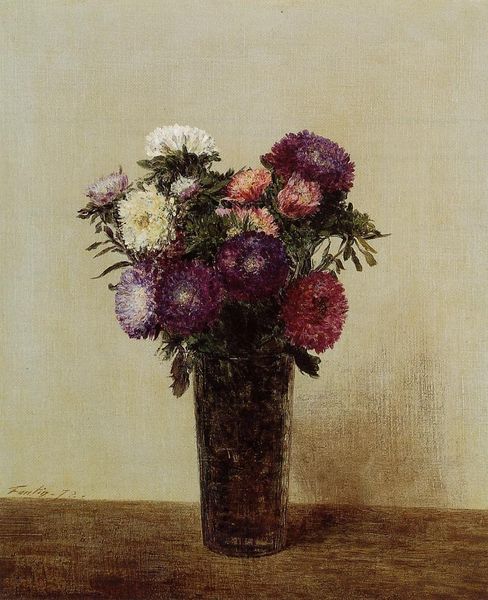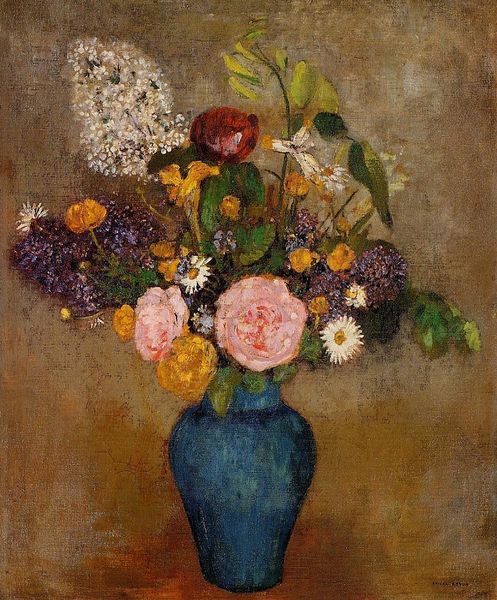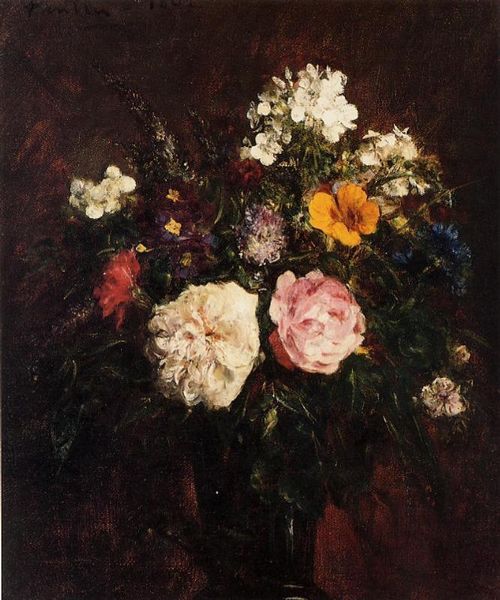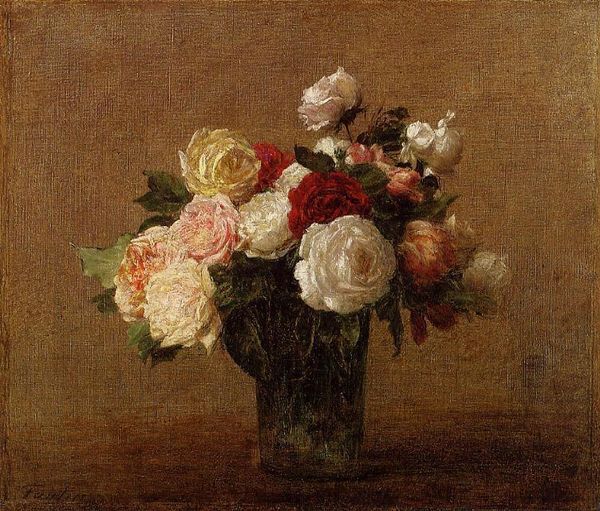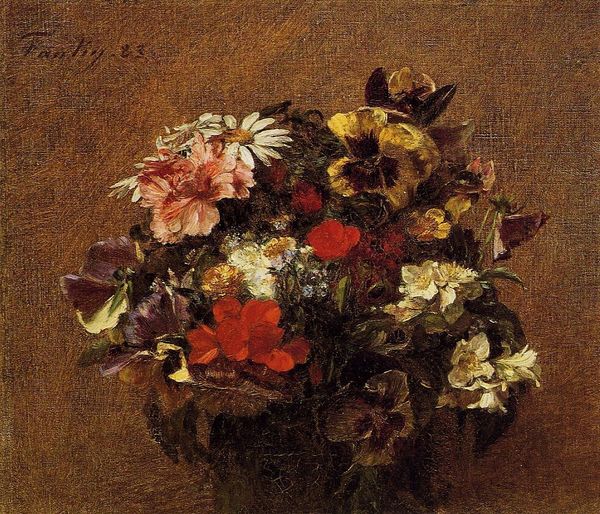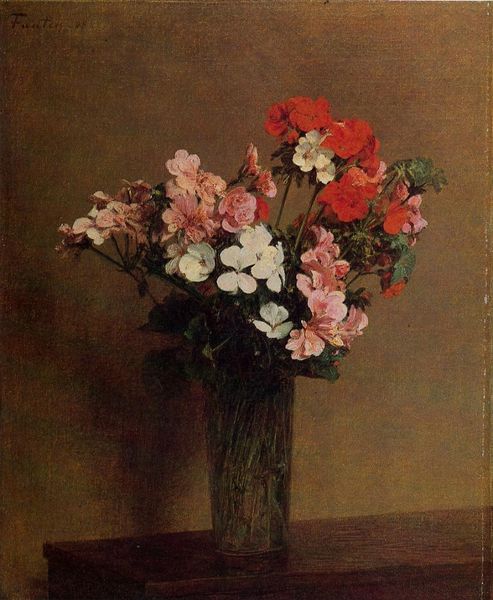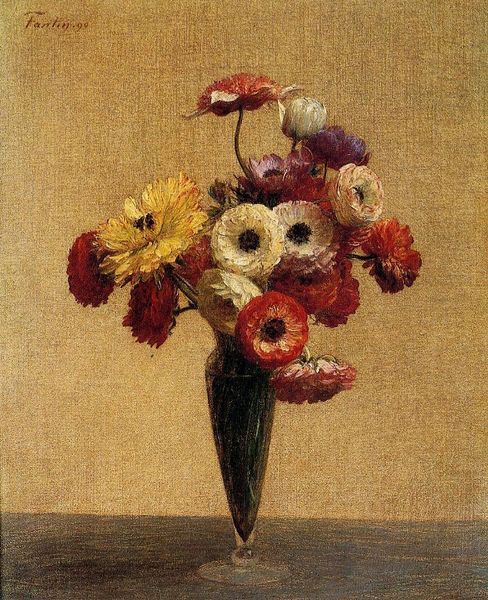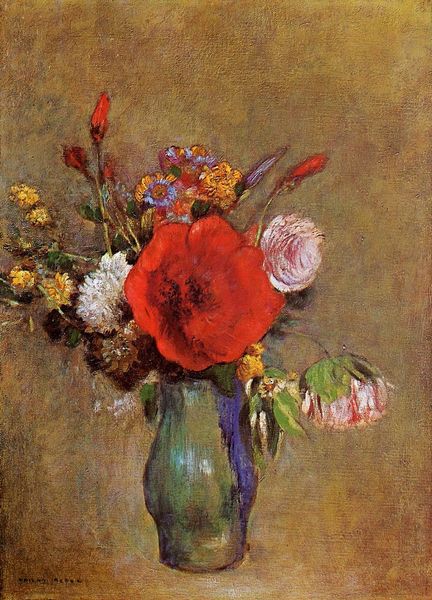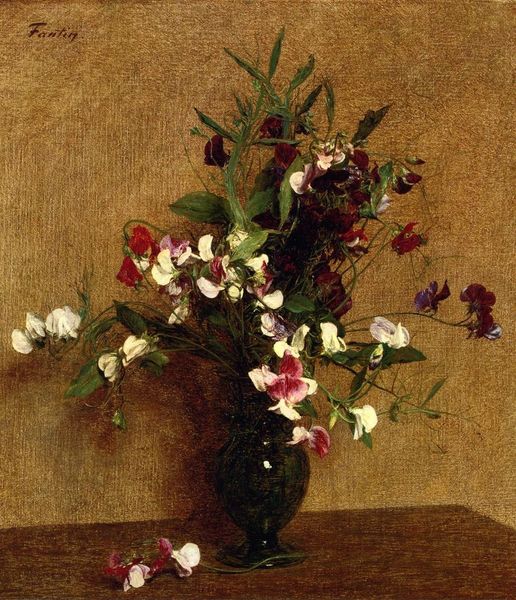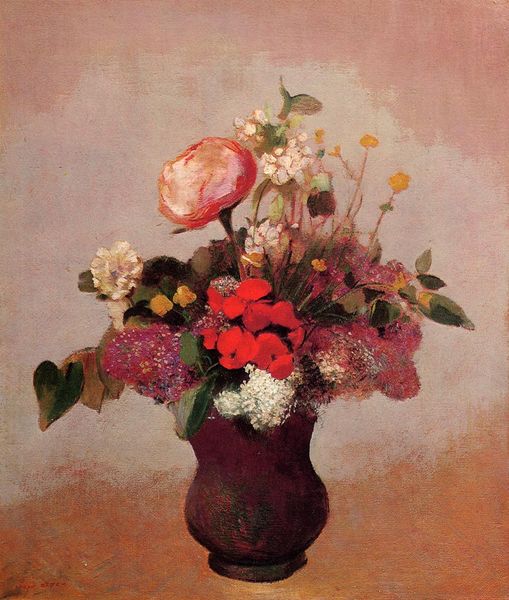
painting, oil-paint, photography
#
painting
#
impressionism
#
oil-paint
#
landscape
#
flower
#
photography
#
oil painting
#
plant
Copyright: Public domain
Curator: Looking at Henri Fantin-Latour's "Spring Flowers," painted in 1879, the first thing that strikes me is its rather melancholic mood, despite the supposed vibrancy of a floral still life. What do you see? Editor: It's interesting you say that. For me, the flowers almost feel defiant in their beauty. But I agree there's a stillness, a captured moment. The historical context of Fantin-Latour’s still lifes suggests a quiet rebellion against academic painting of the time, especially concerning societal expectations and the evolving roles of women in Impressionism. Curator: Exactly. And flowers themselves are potent symbols across cultures. From funerary rites to declarations of love, they carry such multifaceted, and sometimes contradictory, meanings. Does this specific arrangement suggest anything to you? Editor: It brings to mind ideas of ephemerality and vanitas—beauty in decay. Fantin-Latour never explicitly stated this was his intention, but his life certainly wasn't separated from such historical and material contexts; art doesn't occur in a vacuum. What kind of continuities can we draw to today? I think in contemporary social justice circles, flowers are often associated with grieving deaths connected with state or other institutional violences. Curator: Interesting. Considering the impressionistic style, one can't ignore the effect that this very choice in technique has upon that sense of ephemerality. What do the transient flecks of color convey? What is the overall experience to a modern viewer who now knows about the social milieu that surrounded this work? Editor: It invites us to look beyond mere representation. These weren’t simply *any* flowers, carefully rendered and frozen in time. In light of ongoing discussions concerning racial and gender disparities across art industries, and concerning historical absences, this also provides an opportunity to encourage contemporary dialogue regarding the significance and legacy of 19th-century movements and representations. Curator: I think you’ve successfully opened a deeper reflection on "Spring Flowers." It's not merely a vase of flowers, but a historical artifact rich with artistic, cultural, and socio-political weight. Editor: Precisely. It pushes us to reflect on our present-day context in relation to the historical forces which bring artworks like this into existence, encouraging critical conversations and perspectives that go beyond formal interpretations.
Comments
No comments
Be the first to comment and join the conversation on the ultimate creative platform.

